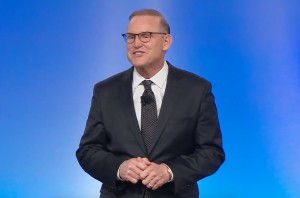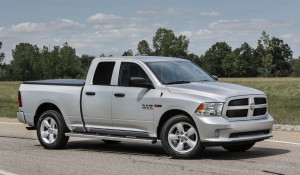
The National Auto Dealers Association Chairman Wes Lutz predicts that auto sales will fall slightly in 2019 to 16.8 million units.
The National Automobile Dealers Association, the trade association for new-car dealerships across the U.S., expects another strong year for new car sales in 2019 despite rising interest rates and an economy that shows signs of slowing.
“We’re forecasting sales of 16.8 million new cars and light trucks in 2019,” said Patrick Manzi, NADA senior economist, at an industry briefing. “This would represent a falloff in sales of about 1.1% compared to 2018.”
Based on a strong November, new-vehicle sales are expected to reach 17 million units in 2018, which would mark the fourth straight year of U.S. auto sales above 17 million units.
“This was unexpected. We were expecting sales to fall off a little more than they have this year, but then the new tax law was passed which put more money in the pockets of consumers and they certainly purchased new vehicles at dealer showrooms,” Manzi added.
(Toyota staying in car market for long haul. Click Here for the story.)
The stimulus provided by the tax cut won’t be available in 2019 so the overall pace of economic growth is expected to fall back to around 2% next year, he added.

The Ram 1500 helped Fiat Chrysler to a 17% sales jump over last year's results for November. Buyers are still looking to get into trucks and utes instead of cars.
NADA Chairman Wes Lutz, president of Extreme Dodge-Chrysler-Jeep-Ram in Jackson, Michigan, who provided a dealer perspective on the state of auto retailing during the briefing, added that sales of 16.8 million new vehicles would still be a robust year in 2019.
Rising prices, however, could take some consumers out of the market next year, he said.
“If incentives continue to go down and interest rates go up, it will put tremendous pressure on consumers with rising monthly payments,” Lutz added. “The level of interest rates moving forward will be a wildcard,” he said.
In 2018, consumers continued to abandon car segments. Light trucks are on track to account for about 70% of sales, while cars will account for nearly 30% of sales. In 2017, the ratio was 64.5% light trucks and 35.5% cars. About 10 years ago, the sales mix consisted of 48% light trucks and 52% cars.
“One of the main factors for this shift has been continued low oil and gasoline prices and the fact that crossover utility vehicles are nearly as fuel efficient as their sedan counterparts. And we’ve seen fuel economy increases across the board, not just on crossovers but also traditional SUVs and pickups,” Manzi said.

Toyota EVP Bob Carter noted that despite the popularity of trucks and SUVs, cars still about for 4 million sales. He also predicted 2019 sales would fall into the high 16-million range.
(Click Here to see why its not just the U.S. market facing a downturn, China is too.)
“We haven’t seen the bottom of the new car market,” he said.
“We also expect gasoline prices to remain relatively low in 2019, not as low as present but still low enough not to cause a panic and a consumer shift back to the car market.”
Lutz said have maintained control over production schedules, but interest rates are driving up the cost of inventory carried by dealers. “We expect incentives to continue to fall and automakers to remain disciplined in 2019,” Lutz said.
Manzi noted that depending on what source you look at, average interest rates on new-vehicle financing have risen 60 to 70 basis points from 2017 through the third quarter of 2018. “That has really driven up the cost of borrowing,” he said. “We expect interest rates to continue to rise. There has been some speculation that the frequency of rate increases may slow.”
Lutz said a positive trend for both consumers and new-car dealerships has been the growth in manufacturer-backed certified preowned sales. CPO sales are up 2.2% through November 2018.
Lutz, who sells two used vehicles for every new model sold at his dealership, predicted that rising transaction prices in the new-vehicle market will result in more consumers shopping for used vehicles.
(To see how FCA saved the November sales numbers, Click Here.)
“There’s an abundance of late-model, off-lease vehicles returning to dealerships, which offers consumers an alternative to higher monthly payments on a new vehicle,” Lutz said.
